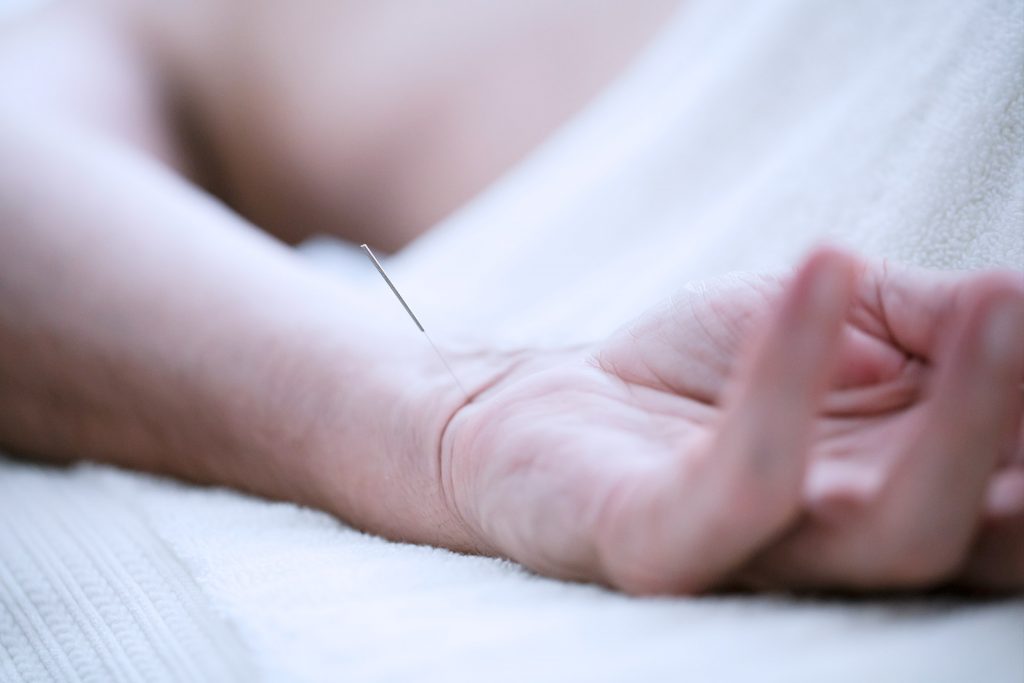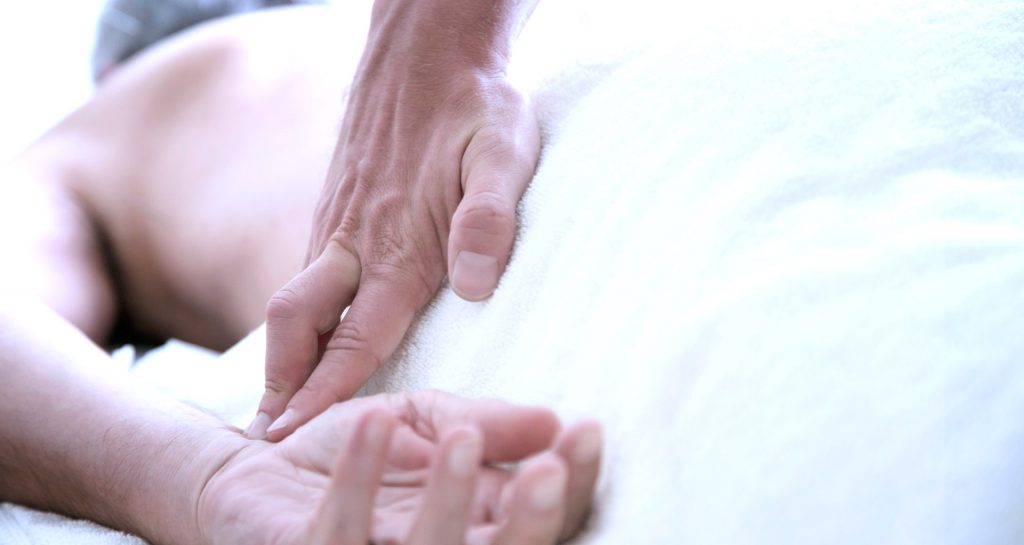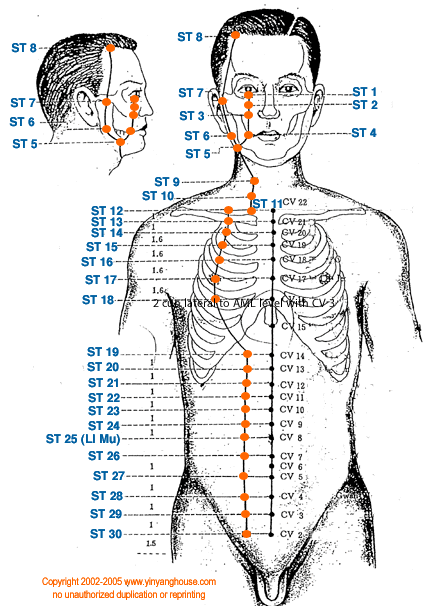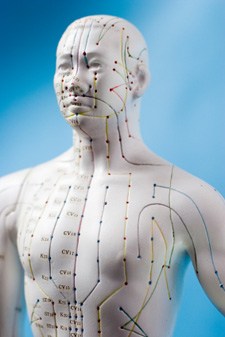
Chinese Pulse Diagnosis: Conversing With the Conscious, Subconscious and Unconscious Levels
Acupuncture can appear mysterious. Being an acupuncturist, I have asked myself at times, how can the insertion of tiny needles into the skin cause healing? I still find it amazing.
Beyond the mystery of how acupuncture works, is the question: how does an acupuncturist determine where to put the needles? Chinese Medicine doesn’t rely on the use of blood tests or scans from fancy machines to diagnose a condition. How then, can an acupuncturist diagnose a patient? Is it through intuition alone? Or is it just based on the site of the patient’s pain or discomfort?
Some diagnoses can be achieved through looking, as the body will indicate certain types of conditions through the skin, facial complexion and eyes. Other diagnoses can be achieved through feeling the abdomen. There are even diagnostic techniques that assess smell and sound. However, the most sophisticated method of diagnosis within Chinese Medicine is the pulse.
Chinese pulse diagnosis is a sophisticated system where a person’s past, present state of being, and future tendencies can be assessed.
There are around 72 channels and 12 major organs within the body. It is the job of the acupuncturist to assess which channel and/or organ a patient’s condition or symptom is coming from. Signs and symptoms can give clues, however it is through the pulse that the present state of the condition, as well as its origin and possible future manifestations can be determined.
Within the acupuncture medical classic “Nan Jing” or “Difficult Issues,” there is a debate as to where a person’s life-force, or “mouth of qi” can be felt. Through thousands of years of debate, the greatest Chinese Medical doctors came to the consensus that the so-called “mouth of qi” could be measured at the radial artery of the wrist. All the channels and organs relate information about themselves to this area of the body. At the “mouth of qi” a person’s vitality and available resources can be measured. “The mouth of qi” is also an area where pathological changes in the channels and organs, such as inflammation, cold damage, and stagnation of energy, blood or fluids can be assessed.
The acupuncturist views the pulse in a more comprehensive manner than Western Medicine. The acupuncturist measures the rate of the pulse, as a Western doctor would do. However, the acupuncturist is also interested in the height, texture and width of the pulse. An acupuncturist measures 3 distinct pulse positions on each wrist. Within each of these positions, there are 5 levels of depth. Within these 6 positions and 30 levels of the pulse, each of the major internal organs and their 7 associated channels can be measured and assessed.
I find the pulse as a diagnostic tool astounding. A tremendous amount of information can be gathered from its assessment. It has always appeared to me a way to look inside the body without relying on expensive machines.
Using symptoms alone can be confusing when diagnosing a condition. Take the example of a common cold, or a flu. Without the pulse it is difficult to assess whether the symptoms are the result of having “caught” a cold, or if they are the body detoxing something toxic from its internal terrain. To adequately treat the condition, it is important to know where it is coming from. This information can be gathered from the pulse. Different positions will be active with different qualities, based on the root of the condition. The pulse can also give clues as to where the condition will progress next if not treated.
Certain pulses also show a person’s susceptibility. For example, if the 1st position of the pulse has a floating and tight quality, anything contracted from the external, such as a cold, will be relatively mild and short-lived. However, if the floating and tight quality appears on the 2nd or 3rd positions of the pulse, an external condition will tend to be complicated with fever or phlegm as it goes into the chest where it can linger.
The different depths of the pulse positions can also provide information as to the level of a person’s condition. Within Chinese Medicine, the body is seen as 3 basic energetic levels. These levels are portrayed through the anatomy of the body. The body’s most superficial energetic layer is called the “wei” level, which is associated with the skin and sinews of the body. The layer below the “wei” is called the “ying level,” represented by the blood vessels. The “wei” level is associated with the Sinew or Muscle channels of the body, while the “ying” level is associated with the “Luo” or Connecting Vessels. These two channel systems share similar symptoms, such as muscular pain. However, if a patient’s pain is coming from the deeper level of the “Luo” Vessels, treating the Sinew Channels will not clear the condition. Even if relief is achieved through the Sinew Channels, it is likely the pain will return, as the root of the condition has not be adequately addressed. It is the pulse that allows the acupuncturist to discern which energetic level and channel the condition is rooted.
The deeper energetic layers of the body can be assessed through the deeper levels of the pulse. The “wei” and “ying” levels are the more superficial layers of the body. The body’s deepest layer is called the “yuan” or constitutional level. This level relates to the internal organs, the body’s constitution, as well as the body’s “ditches,” where latent pathology is stored. This is a mysterious level, relating to a person’s constitutional temperament, genetically inherited conditions and chronic degenerative issues. Pathology that hides within the joints and bones can be assessed here. As can deep psycho-spiritual challenges.
The “yuan” level is felt close to the bone at the radial artery. At this level, an acupuncturist can assess where major stress and pathology is located, or where it will be stored in the body if the person becomes physically or mentally overwhelmed.
The “yuan” level can also give insight into chronic struggles within a person’s life. Here’s an example: a patient came to see me complaining of weight loss and difficulty controlling his emotions in relation to the outside world. My first thought was, the root of this patient’s suffering could be coming from 3 different channel systems. I assessed the moderate and superficial layers of the pulse, and treated him using the Stomach and Pericardium Primary Meridians of the body (at the “ying” level). Upon the next visit, the pulses and symptoms had not improved. After listening to the patient, I began to ask questions relating to his past. Recent symptoms seemed to be related to tendencies with a very old history, perhaps even inherited from his parents. Since the “yuan” level relates to deep conditions with a long history as well as inherited conditions, I began to examine to deep level of the patient’s pulse. I found a pulse quality suggesting the constitutional channel “Yang Qiao” was active. Philosophically, “Yang Qiao” relates to a person’s relationship with the outside world. It connects to the brain, which is seen as the depository of experiences within Chinese Medicine. A tendency of a “Yang Qiao” imbalance is to see the world through the scrim of old experiences, causing an overreaction to them. Physically, a “Yang Qiao” imbalance manifests as excessive heat which can consume the tissues of the body, damage the thyroid and lead to exuberant emotional expression. Once I began treating the “yuan” level through the “Yang Qiao” channel, the patient’s symptoms began to improve, and his tight-rapid pulses slowed and softened.
You might ask why, with this patient, I didn’t examine the deep level of the pulse upon the initial treatment intake? Some people are either not ready, or not yet willing to work on the deeper issues within their lives. The “yuan” level is a place where sublimated physical and mental-emotional material is located. If a person is not ready or willing to face this material, it is not my place to force them. I must honor the patient’s limits. This is key to clinical success. Based on the pulse, an acupuncturist can assess the current strength of a person. If the pulses are weak or thin, indicating inadequate blood, fluids and “qi-energy,” it would be unwise to lead a patient into a “healing crisis,” or detox. Chances are, they will not have the fortitude or resources to deal with it. In this case, the focus of treatment becomes building back the resources of the body to get the patient ready for the release, but only when they are ready.
The Primary Meridians are a good place to start. They have the power to fortify the body. Strength and insight gained from these treatments can help a person move into willingness to resolve the deeper conflicts within their lives.
Most people come for acupuncture treatment to let go of a form of suffering in their lives, be it physical or mental-emotional. The healing begins when a patient enters the treatment room. A dialogue begins where the patient can express from his conscious level, speaking of symptoms, thoughts and feelings. The dialogue continues as the pulse is examined. This allows a conversation between the acupuncturist and the patient’s subconscious level. The pulse will express things either the patient is unaware of, or not yet ready to speak about. The deepest conversation occurs when the “yuan” level of the pulse is examined, giving voice to suppressed or pre-verbal material. As the wise sage-doctors of the past write, throughout this entire process, the spirit of the patient is dialoguing with the spirit of the acupuncturist. Many layers of conversation are occurring simultaneously. From this multi-layered dialogue between acupuncturist and patient, the point prescription to be needled organically comes into being.










No Comments